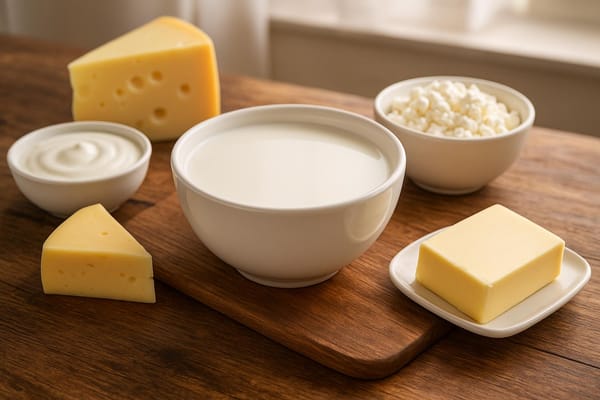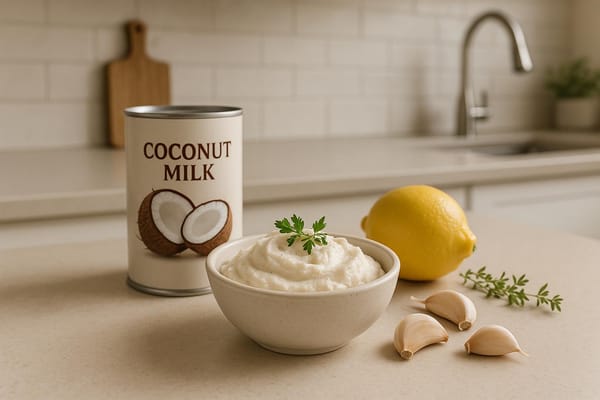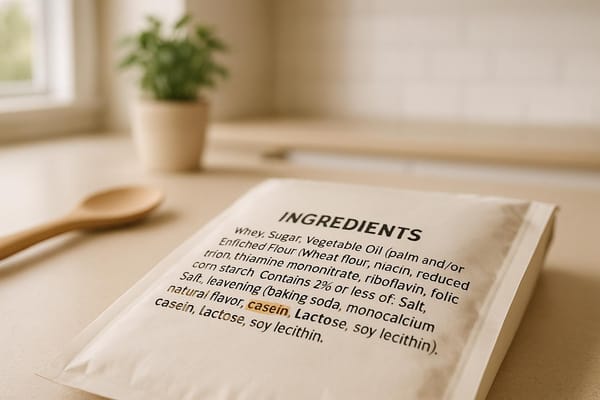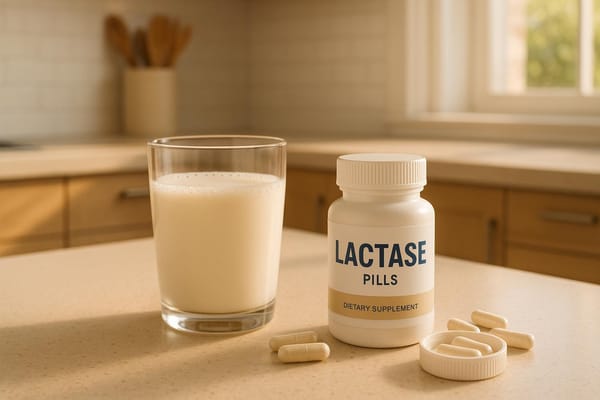How to Make Almond Milk at Home
Learn how to make creamy almond milk at home with simple ingredients and customizable flavors for a fresh, dairy-free option.
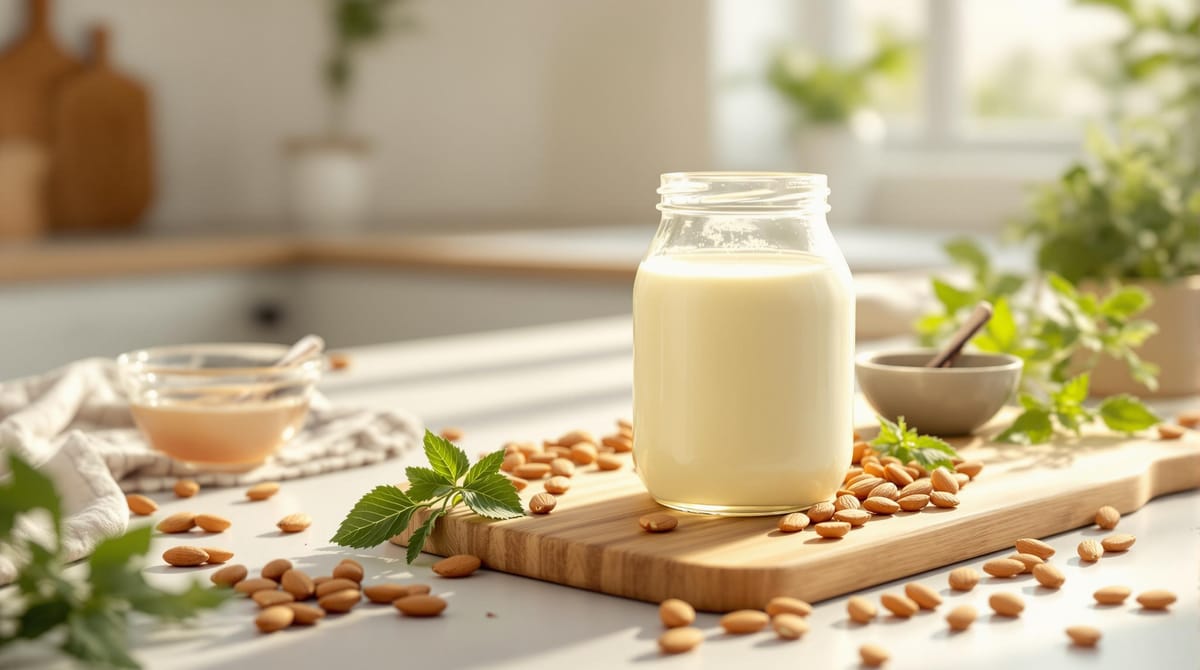
Making almond milk at home is simple, cost-effective, and gives you complete control over the ingredients. Here's how to do it:
- Ingredients: 1 cup raw almonds, 4 cups filtered water, optional flavor add-ins like dates, vanilla, or cinnamon.
- Tools: Blender, nut milk bag/cheesecloth, mixing bowl, storage container, and measuring tools.
- Steps:
- Soak almonds overnight (8–12 hours), then rinse.
- Blend soaked almonds with 4 cups of water until smooth.
- Strain the mixture through a nut milk bag or cheesecloth.
- Add optional flavors (e.g., dates, vanilla) and blend again.
- Store in an airtight container in the refrigerator for 4–5 days.
Pro Tips:
- Use high-powered blenders for creamier milk.
- Repurpose leftover almond pulp for baking or smoothies.
- Shake the milk before use if it separates during storage.
Homemade almond milk is a dairy-free, preservative-free option that’s customizable to your taste.
How to Make Almond Milk | Homemade Almond Milk Recipe
What You Need
Get everything ready before you start to make the process smooth and hassle-free.
Ingredients List
For a basic batch of almond milk (makes about 4 cups), you'll need:
- 1 cup raw almonds (unsalted)
- 4 cups filtered water (for blending)
- Extra water (for soaking)
- Optional add-ins for flavor:
- 1–2 Medjool dates (for sweetness)
- 1/4 teaspoon pure vanilla extract
- A small pinch of sea salt
- 1/4 teaspoon ground cinnamon
- 1 tablespoon pure maple syrup
Want a creamier milk? Use up to 1.5 cups of almonds with the same amount of water. Prefer a lighter drink? Reduce the almonds to as little as 3/4 cup.
Kitchen Tools
Have the following tools on hand:
- High-powered blender: Gives a smooth texture; standard blenders may take longer.
- Nut milk bag or fine-mesh cheesecloth: Nut milk bags are sturdy, but cheesecloth works too.
- Large mixing bowl: At least 6-cup capacity.
- Storage container: Glass jars or bottles with airtight lids are ideal.
- Measuring cups and spoons: For precise portions.
- Funnel (optional): Makes transferring the milk easier.
- Colander: For rinsing almonds before and after soaking.
Make sure everything is clean and dry to keep the milk fresh. Glass containers are a great choice - they’re easy to clean and won’t absorb odors or flavors.
Once you’ve gathered your ingredients and tools, you’re all set to make almond milk in just five simple steps.
Making Almond Milk: 5 Steps
Step 1: Soak Almonds
Place raw almonds in cool, filtered water and let them soak for 8–12 hours (overnight works best). Once soaked, drain and rinse the almonds under cool water. They should feel plump and slightly soft by now.
Step 2: Blend
Add the soaked almonds to your blender along with 4 cups of filtered water. Start blending on low for about 30 seconds, then switch to high for 1–2 minutes until the mixture is smooth.
Pro tip: If your blender isn’t very powerful, blend in shorter bursts (30–45 seconds) and give the motor a break to avoid overheating.
Step 3: Strain
Pour the blended mixture through a nut milk bag or a double layer of cheesecloth placed over a large bowl. Gently squeeze to extract as much liquid as possible, but avoid pressing too hard to keep the pulp out. This step usually takes about 3–5 minutes.
Step 4: Add Flavors
Personalize your almond milk by mixing in one or more of these options:
- Sea salt: Add 1/4 teaspoon to bring out the almond flavor.
- Sweetener: Toss in 1–2 pitted Medjool dates or 1 tablespoon of maple syrup.
- Vanilla: Mix in 1/4 teaspoon of pure vanilla extract.
- Spices: Try 1/4 teaspoon of ground cinnamon or nutmeg for a warm twist.
Blend for another 30 seconds to combine everything evenly.
Step 5: Storage
Pour your almond milk into an airtight glass container and store it in the back of the refrigerator. It will stay fresh for 4–5 days. Don’t worry if the milk separates during storage - just give it a good shake before using.
Tips for Better Results
Take your almond milk to the next level with these practical tips to improve its texture, flavor, and shelf life. Once your almond milk is ready, these suggestions will help you get the best outcome every time.
Blender Selection
The type of blender you use can make a big difference in the texture and consistency of your almond milk. High-powered blenders like Vitamix or Blendtec (with at least 1,000 watts) are ideal. Their strong motors break down almonds more thoroughly, giving you creamier milk and better yield.
If you’re using a standard blender, you can still get good results by working in smaller batches and blending for 2-3 minutes. Start with 3 cups of water, blend thoroughly, and then adjust the consistency to your liking.
Repurpose Almond Pulp
Don’t toss the leftover almond pulp - it’s packed with fiber and nutrients! Here are some simple ways to use it:
- Almond Flour: Spread the pulp on a baking sheet and dry it in the oven at 200°F (93°C) for 2-3 hours, stirring occasionally. Once dried, pulse it in a food processor until fine. Store in an airtight container for up to 3 months.
- Baking Addition: Add the wet pulp to:
- Oatmeal (2-3 tablespoons per serving)
- Smoothies (1/4 cup per batch)
- Cookie dough (replace 1/3 of the flour with dried pulp)
- Energy balls (mix with dates and cocoa powder)
Keeping It Fresh
Proper storage is key to maintaining your almond milk’s freshness and flavor. Use thoroughly cleaned equipment - wash all tools with hot, soapy water and rinse well. Glass containers are the best choice for storage since they don’t hold onto odors or stains like plastic.
Follow these tips to keep your almond milk fresh:
- Store at 40°F (4°C) or below in the refrigerator.
- Consume within 4-5 days for the best taste.
- Place the milk in the coldest part of your fridge, not the door, where temperatures vary.
- Leave about 1 inch of space in the container to allow for expansion.
Pro Tip: If your almond milk develops an odd smell or taste before day 4, check your refrigerator’s temperature with a thermometer. Many home fridges are warmer than their settings suggest, which can cause faster spoilage.
Almond Milk and Lactose Intolerance
Why Almond Milk Works for Lactose Intolerance
Homemade almond milk is a great option for anyone who can't digest lactose. Since it's made from just almonds and water, it contains no lactose - the sugar in dairy that often causes stomach troubles. Plus, making almond milk at home lets you tweak the almond-to-water ratio and flavor to match your preferences.
For those who still enjoy dairy occasionally, there's an enzyme supplement that can help.
How milktab Helps with Dairy
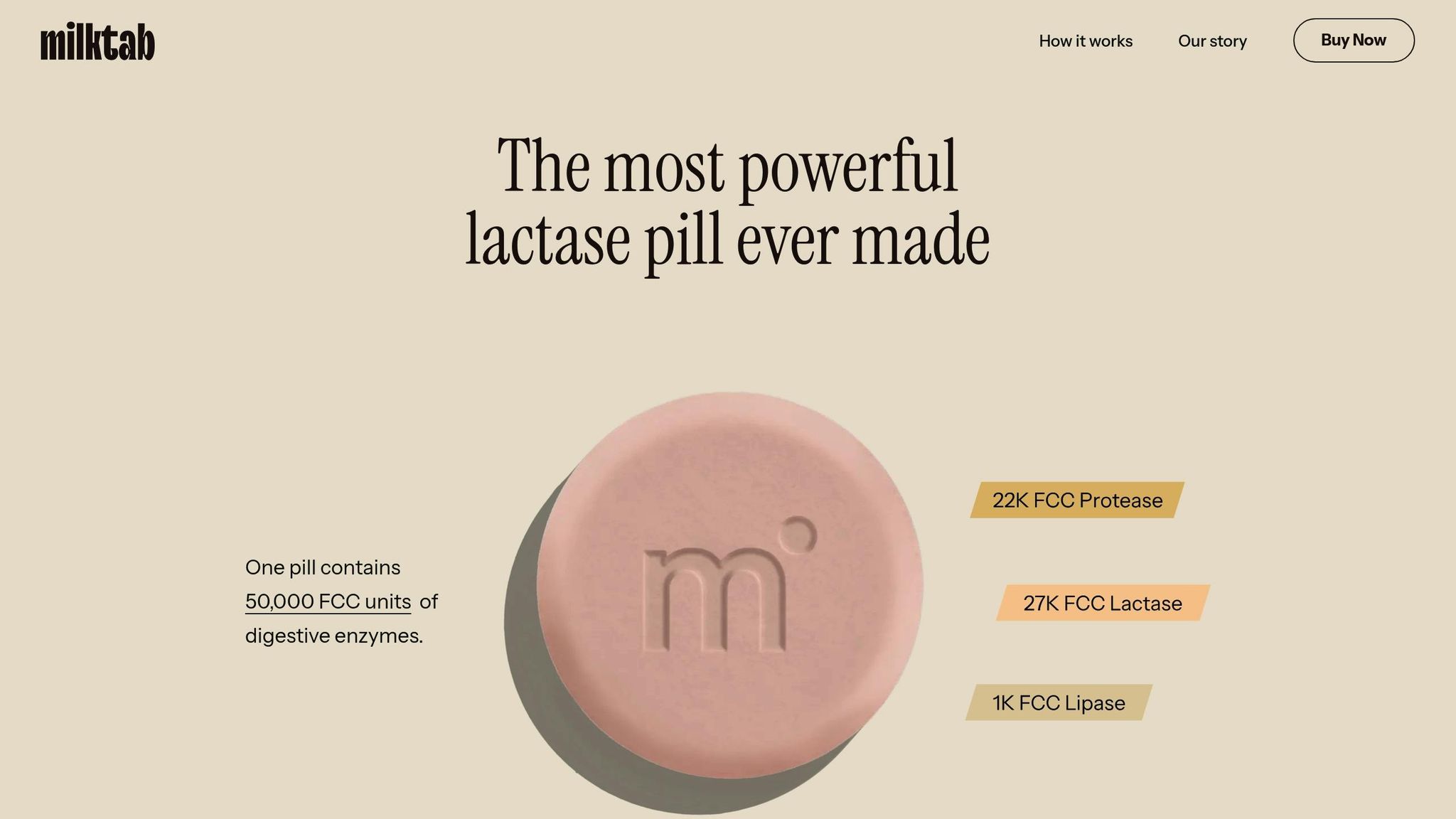
Some people like to indulge in dairy now and then, even with lactose intolerance. That’s where milktab comes in. This enzyme supplement includes lactase, protease, and lipase for better digestion:
| Enzyme | Amount (FCC units) | Purpose |
|---|---|---|
| Lactase | 27,000 | Breaks down lactose in dairy |
| Protease | 22,000 | Helps digest proteins |
| Lipase | 1,000 | Assists with fat digestion |
"Best on the market!! I've tried other enzyme pills, but milktab always works reliably regardless of the lactose content." - Christina
If you're enjoying dairy, take milktab with those meals - but skip it when you're having almond milk. The max recommended dose is two pills per day, so you can keep dairy as an occasional treat while sticking to a mostly dairy-free lifestyle.
These enzyme supplements are especially handy when eating out, traveling, attending events, or indulging in your favorite dairy foods. They're vegan, non-GMO, and FODMAP-free, making them a convenient option when almond milk isn’t available or when you want to enjoy dairy without the discomfort.
Conclusion
Making almond milk at home is a simple way to support your dairy-free lifestyle. With just almonds and water, you can create a fresh, preservative-free option tailored to your preferences.
Even if you occasionally enjoy dairy, homemade almond milk can still be a go-to choice. For those moments when dairy is on the menu, products like milktab can help. As one traveler put it:
"Milktabs WORK!! I went on a European vacation and ate all the cheeses I wanted to! It was so great to have these tabs!!!!"
Homemade almond milk not only complements your dairy-free habits but also helps minimize packaging waste. Plus, you get complete control over the ingredients. With the right storage and a regular routine, you can always have a fresh supply ready to meet your needs.
